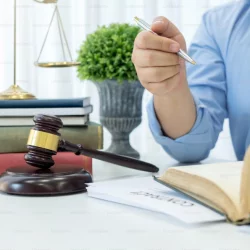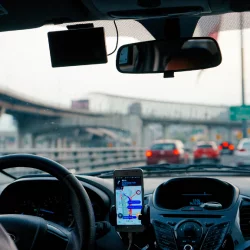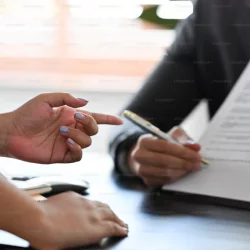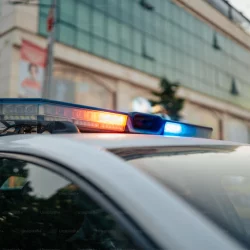The Unseen Heroes of Personal Injury Advocacy: How Community Support Shapes Justice
Personal injury advocacy often highlights the crucial role of attorneys and legal strategies in seeking justice for victims. However, the significance of community support is frequently overlooked. Communities serve as the backbone of personal injury advocacy, providing essential resources, emotional support, and collective strength to those affected by accidents and injuries. This blog explores the vital role that community engagement plays in shaping personal injury advocacy, empowering individuals, and ultimately leading to more just outcomes.
The Community's Role in Advocacy
According to www.kingbirdlegal.com, communities play a pivotal role in supporting personal injury victims and advocating for their rights. Grassroots organizations, local support groups, and advocacy networks are essential for raising awareness about the challenges faced by those injured due to negligence or misconduct. By creating safe spaces for victims to share their experiences, these groups foster a sense of solidarity and understanding that can help alleviate feelings of isolation and despair.
Furthermore, community-led initiatives can amplify the voices of injury victims, helping to bring attention to issues that may otherwise go unnoticed. Local campaigns, public forums, and outreach events not only inform the public about the realities of personal injury cases but also encourage victims to seek help and understand their rights. When communities unite, they can create a powerful force for change, advocating for justice on behalf of those who have suffered harm.
Personal Narratives and Storytelling
One of the most impactful aspects of personal injury advocacy is the power of storytelling. Sharing personal narratives can humanize the legal process, making it relatable to juries, judges, and the public. When victims recount their experiences, they bring to light the emotional and physical toll of their injuries, fostering empathy and understanding among listeners. This emotional connection can significantly influence legal outcomes and public perception.
Moreover, storytelling can galvanize community support and mobilize resources. Victims who share their stories often inspire others to come forward and advocate for change. Campaigns centered around personal narratives can lead to increased public awareness, prompting local legislators to address the underlying issues contributing to personal injuries, such as unsafe road conditions or inadequate safety regulations. By harnessing the power of personal stories, advocates can create a ripple effect that fosters greater justice for all.
The Intersection of Law and Public Health
Personal injury advocacy is not solely a legal issue; it intersects significantly with public health. When individuals suffer injuries due to negligence, it impacts not only the victims but also the broader community. By raising awareness of personal injury cases, advocates can highlight the public health implications of preventable accidents, such as workplace injuries or traffic collisions. This perspective encourages communities to consider the root causes of these incidents and work toward preventive measures.
Advocates can push for policy changes that prioritize community safety and health. For instance, initiatives aimed at improving road safety, enforcing workplace safety regulations, or addressing mental health resources for injury victims can create a safer environment for everyone. By framing personal injury advocacy within the context of public health, communities can foster a culture of prevention, ultimately reducing the incidence of injuries and promoting overall well-being.
The Role of Technology in Advocacy
In the digital age, technology is transforming personal injury advocacy in unprecedented ways. Social media platforms and online forums allow victims to share their stories, connect with others, and rally support from their communities. These tools have proven invaluable in amplifying voices that might otherwise remain unheard, providing a platform for individuals to raise awareness about their experiences and advocate for justice.
Additionally, technology enables real-time mobilization for community support. Online petitions, crowdfunding campaigns, and awareness hashtags can quickly gain traction, encouraging collective action on behalf of injury victims. This digital activism not only helps victims secure necessary resources for recovery but also creates a sense of urgency that can lead to meaningful change in legislation and community practices. By leveraging technology, personal injury advocates can enhance their efforts and reach a broader audience than ever before.
Collaborative Approaches to Advocacy
Collaboration among various stakeholders is essential for effective personal injury advocacy. Attorneys, healthcare providers, community organizations, and support groups can work together to create a holistic approach to supporting victims. By combining their expertise, these stakeholders can build stronger cases and ensure that victims receive the comprehensive care they need.
For instance, healthcare providers can offer valuable insights into the medical aspects of a victim’s injuries, while attorneys can navigate the legal complexities of their cases. Community organizations can facilitate support networks and educational resources, empowering victims to understand their rights and options. When all parties collaborate, they enhance the effectiveness of advocacy efforts and improve outcomes for injury victims, creating a more just and supportive environment.
Conclusion: Empowerment through Education and Community Engagement
Understanding the role of community support in personal injury advocacy is crucial for victims and advocates alike. By fostering an environment where individuals feel empowered to share their stories and seek assistance, communities can play an active role in the pursuit of justice. Education is key; workshops, seminars, and outreach programs can equip individuals with the knowledge they need to navigate the legal system effectively and advocate for their rights.
Ultimately, the unseen heroes of personal injury advocacy are the communities that rally around victims, offering support, resources, and a collective voice. By recognizing and harnessing this power, we can reshape the landscape of personal injury advocacy, ensuring that justice is not just a legal outcome but a community-driven mission. Together, we can create a safer, more compassionate world for everyone affected by personal injuries.
More to Read:
Previous Posts:









